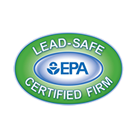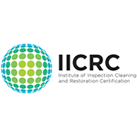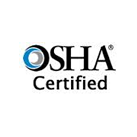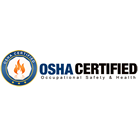What Is Asbestos?
Asbestos is a naturally occurring mineral that once was lauded for its versatility, recognized for its heat resistance, tensile strength and insulating properties, and used for everything from fire-proof vests to home and commercial construction. It was woven into fabric, and mixed with cement.
Where Can I Find Asbestos In My Home?
Asbestos is commonly found in the acoustical texture on ceilings.
- Some roofing and siding shingles are made of asbestos cement.
- Houses built between 1930 and 1978 may have asbestos as insulation.
- Asbestos may be present in textured paint and in patching compounds used on wall and ceiling joints. Their use was banned in 1977.
- Artificial ashes and embers sold for use in gas-fired fireplaces may contain asbestos.
- Older products such as stove-top pads may have some asbestos compounds.
- Walls and floors around wood burning stoves may be protected with asbestos paper, millboard, or cement sheets.
- Asbestos is found in some vinyl floor tiles and the backing on vinyl sheet flooring and adhesives.
- Hot water and steam pipes in older houses may be coated with an asbestos material or covered with an asbestos blanket or tape.
- Oil and coal furnaces and door gaskets may have asbestos insulation.
When Was Asbestos Banded In Construction?
The companies making this statement assume that the federal government banned all asbestos containing materials in 1974. In New York State, the Department of Labor, which regulates asbestos abatement, also uses the year 1974 in the regulations for determining which buildings require asbestos inspections. While the federal government, under the Occupational Safety and Health Administration (OSHA) regulation 1926.1101 (k) (1), requires building owners, of buildings built no later than 1980, presume surfacing materials, thermal system insulation, roofing materials, and floor tiles contain asbestos. Owners are required to handle these building materials as asbestos containing materials (ACM) until a certified asbestos inspector takes samples of the materials, in accordance with the Environmental Protection Agency Asbestos Hazard Emergency Response Act (EPA AHERA), and the samples verify the materials do not contain asbestos. However, are 1974 or 1980 appropriate dates to use in making a determination whether building materials can contain asbestos?
Is there an appropriate end date for asbestos use in buildings? Recent headlines indicate the answer to this question is no. These headlines indicate that some current building materials are contaminated with asbestos or still contain asbestos sufficiently enough for the materials to be considered asbestos containing materials. For example, the Asbestos Disease Awareness Organization reported in November, 2007 that they sampled a number of current building materials and determined that DAP’s “33” window glazing and “crack shot” spackling paste and Gardner’s leak stopper roof patch all contained asbestos. DAP’s “33” window glazing was purchased at Home Depot and Lowes for the purpose of the study and contained 2.6% tremolite, and 0.13% chrysotile asbestos (2.73% total asbestos). DAP’s “crack shot” spackling paste was also purchased at Home Depot and Lowes and contained 0.98% tremolite, and 0.066% chrysotile asbestos (1.05% total asbestos).
Why was it banned?
Health reasons! Asbestos is dangerous when it is in the air. When asbestos is in the air, you cannot see it, but you breath it. Asbestos is dangerous when it gets into your body. Asbestos gets into your body when you breath it or swallow it. It is most common for adult asbestos exposer to be from inhalation and more common for children to ingest it.
Asbestosis is a benign yet deadly lung disease that is characterized by severe scarring and inflammation of lung tissue. It prevents the lungs from expanding and relaxing normally, leading to symptoms such as shortness of breath and tightness in the chest.
Even though it is benign, asbestosis can be extremely serious. For seven of the eight years between 2000 and 2007, asbestosis was an underlying or contributing cause of death for more than 1,400 people in the United States.
Mesothelioma
With exposure responsible for nearly all cases, mesothelioma is the signature asbestos-related cancer. It is also one of the most deadly related diseases, causing more than 3,000 deaths each year in the United States alone. On average, the prognosis is less than one year from the time of diagnosis.
The cancer is named after the mesothelium, the thin protective lining where the tumors develop. It can appear on the lining of the lungs, stomach, heart or testicles - known respectively as pleural mesothelioma, peritoneal mesothelioma, pericardial mesothelioma and testicular mesothelioma. Each type of mesothelioma is associated with a unique set of symptoms, but chest or abdominal pain and shortness of breath affect most patients, regardless of their specific diagnosis.
Who Regulates What We Do?
Asbestos is considered a hazardous material, which means there are many pairs of eyes that watch over our industry. We have developed a great reputation for doing things by the book, which is in our opinion the only way to work. Here are some of the more recognizable agencies we work with daily:
Environmental Protection Agency (EPA) who is represented locally by The South Coast Air Quality Management Department.
Air Quality Management District (AQMD) The local branch office is located in Diamond Bar, CA.
California Department of Occupational Safety and Health Administration (Cal OSHA)
How Do I Deal With My Asbestos?
The first thing we always recommend is to have a survey done of the area in question. This way you will know for certain not only what materials a asbestos containing but at what levels they are. Next thing you need to do is contact us! We have been working here in the south bay for over 25 years and have all the solutions necessary to deal with your abatement process.
We don’t always need to remove the asbestos either; we have many other options that we are certified in to help you deal with your needs and budget.









